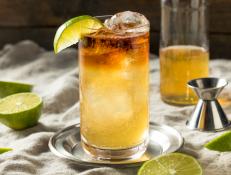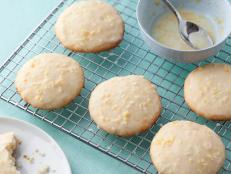Can Beer Be a Part of a Healthy Diet?

Frosty craft beers are hotter than ever, and there’s way more to them than just cracking one open to watch the game. Beer enthusiasts are touting their favorite specialty batches for everything from food pairings to exercise recovery. Can these popular brewskis be part of a healthy diet?
Nutrition Facts
Beers will vary by ingredients, flavor, color and alcohol content. On average a regular beer (5 percent alcohol by volume) contains 150 calories and 13 grams of carbs. A light beer (typically 4 percent alcohol by volume) comes in at closer to 100 calories with 5 grams of carbs. While booze isn’t exactly the key to a healthy diet (those calories can add up quickly!), there’s solid evidence that moderate alcohol consumption (one drink a day max for gals and two a day max for guys) can benefit heart health.
Classes of Beer
Beer is made from a combination of water, malt (usually malted barley), hops and yeast that is fermented to bubbly perfection. These elements create a beverage that can be various combinations of sweet, bitter, dry, light, heavy, strong and mild. There’s quite a bit of technical jargon that goes into how beer is made and named! Here’s a brief rundown of some of the most-popular varieties.
Ale: Technically in a separate class from “beer,” ales tend to have a strong, bitter flavor and some have a higher alcohol content. “Pale ales” tend to be lighter and more balanced.
IPA: This acronym stands for “India Pale Ale,” and these beers are super-trendy right now! They are slightly more bitter than other ales and have lots of “hoppy” flavor. An IPA is a hands-down favorite with a slice of cheesy pizza!
Stout: These rich and creamy brews are dark, strong and usually hoppy, with less malty sweetness; some are a great complement to chocolate desserts. One of the most well known is Guinness, a dry stout with a lower alcohol content (about 4% by volume)
Porter: Heavy, dark and high alcohol by volume sums up a porter; it has a strong flavor from roasted malt.
Lager: Traditionally an aged beer, but made through faster processes nowadays, they’re typically light and bubbly with golden color — pilsners are light and refreshing lagers.
Wheat: These beers tend to be pale and subtle, made from malted wheat.
Cooking with Beer
Cooking with beer can also reduce some of the calories and impart unique flavor to all kinds of recipes. Beer can be used in everything from baked goods to marinades, to sauces and salsas. Beer can enhance the flavor of foods or even take things up an extra notch (alcohol can actually intensify the heat in spicy foods).
In response to all the beer-mania there has been a surge of cookbooks dedicated to the love of beer. Craft Beer Bites and The Craft Beer Kitchen are just a few of the newest titles.
Dana Angelo White, MS, RD, ATC, is a registered dietitian, certified athletic trainer and owner of Dana White Nutrition, Inc., which specializes in culinary and sports nutrition.


































